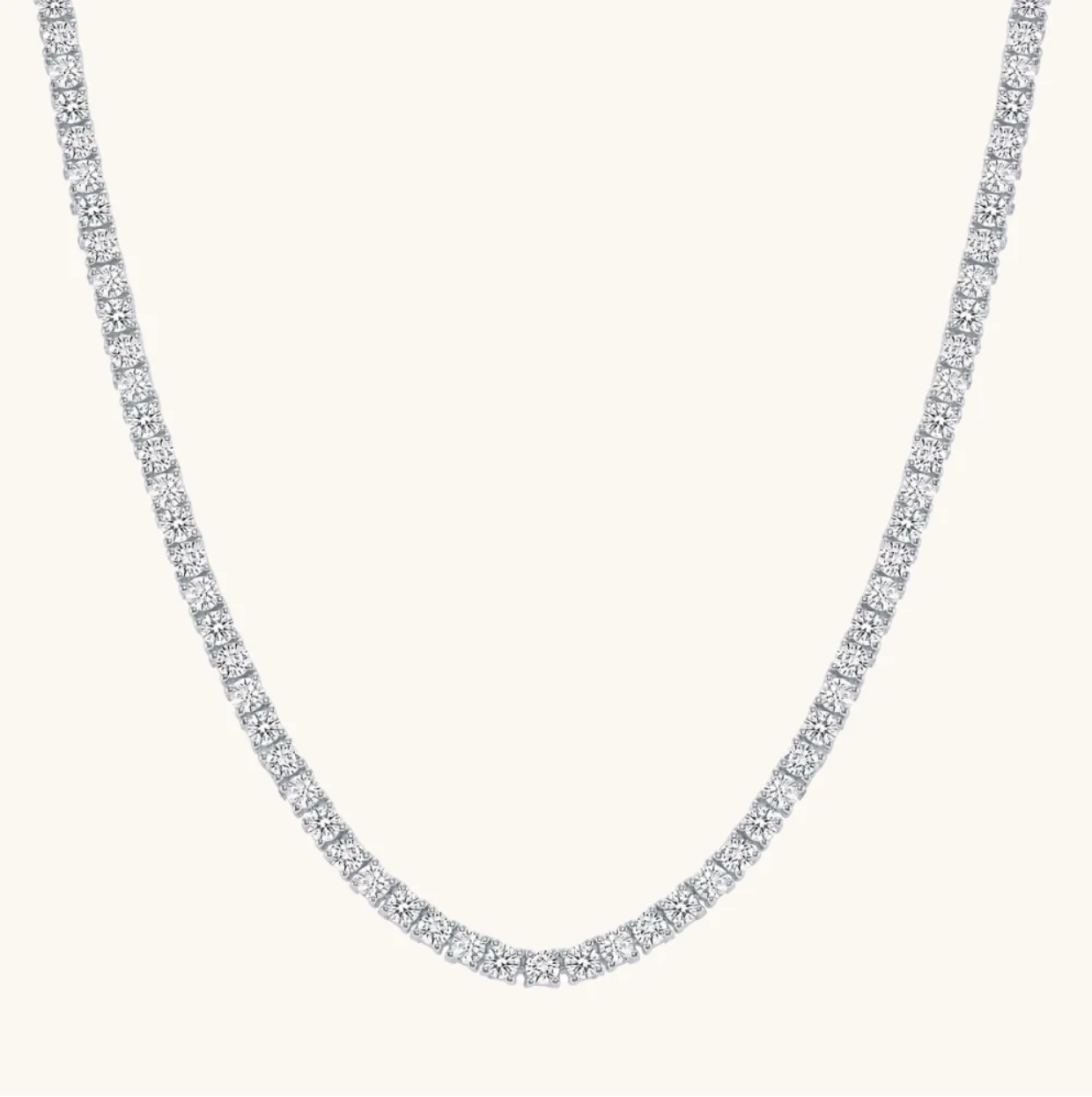The introduction of lab grown diamonds into the world of diamond jewelry has changed the market, providing new options to buyers. However, some buyers may be skeptical, wondering if a laboratory grown diamond can truly compare to their mined diamond counterparts.
We're here to assure you that lab grown diamonds being offered by jewelers are just as real as those found through mining, meeting the same standards when it comes to certification and grading.
If you're looking for a high-quality lab grown diamond, a knowledge of diamond grading and what to look for on a diamond certificate can help you be more informed as you shop. Let's explore what lab grown diamonds are, and how they are graded, so you can shop for laboratory grown diamonds with ease.
What is a Lab Grown Diamond?
A lab grown diamond is exactly what it sounds like! Lab created diamonds are diamond gemstones that have been created in a lab, instead of being mined from the earth like a natural diamond. They are also sometimes referred to as man made diamonds.
How Are Lab Diamonds Made?
A lab created diamond is created with an engineering process that simulates the natural processes that form a natural diamond. Diamonds found through mining are created as a result of massive amounts of pressure and heat from the earth, compounding to produce brilliant gemstones.
Labs mimic this pressurization process, generating massive amounts of pressure to produce a lab diamond. These diamonds share the same physical and chemical makeup as a natural diamond, making lab grown diamonds a great choice for those shopping for diamonds.
How Are Lab Grown Diamonds Certified?
As lab grown diamonds are the same as natural diamonds, both gemstones share the same certification process. Even if they are judged by different institutes, grading reports are not specific to lab diamonds or mined diamonds. Both diamonds are subject to the same grading standards, performed by the same institutions.
Diamonds are certified by a gemologist from a reputable gemological institute, such as the International Gemological Institute (IGI) or the Gemological Institute of America (GIA). An IGI or GIA certification and IGI or GIA report can help to assure buyers that their diamond is not only a real diamond but meets the specific diamond quality standards they are paying for.
But what are these standards that buyers should be looking for? The different qualities buyers should be looking at when diamond shopping can be broken down into four different categories.
Lab Grown Diamond Grading: The Four C's
The Four C's are four different categories that define the attributes of a diamond: Its color, cut, clarity, and carats. These categories are broken down on a diamond grading report when looking at a diamond certification, to offer buyers assurance when shopping. These factors can also help buyers better understand diamond prices, depending on their graded diamond.
The Four C's were established by the founder of GIA in the 1940s, Robert M. Shipley, and continue to be used throughout the diamond industry today. Let's explore these categories, so you can better understand the essential elements of diamonds.
Color
When you think of diamond color, you might be picturing a brightly dyed gemstone, but color here actually refers to a diamond's lack of color. Color gradings for diamonds will help buyers understand how clear their diamond is. When diamond buying, the clearer the diamond, the higher its quality.
If you want a clear diamond with no color, shop for D, E, or F color gradings. After this, there are G, H, I, and J-graded diamonds which are near-colorless, with a slight warmth to the gemstone.
Cut
Like color, the diamond cut can often confuse first-time diamond buyers when looking at a diamond report. Cut doesn't refer to the diamond shape (and there is a wide variety of them), but how well the diamond was cut into whatever shape it is in.
If a diamond has been cut well, it will be brilliant and sparkling. Poorly cut diamonds will lack this same brilliance and shine.
Clarity
A diamond's clarity refers to the quality of the diamond and its internal inclusions, which are small imperfections that exist within the stone. Diamond clarity is determined by the diamond's clarity grade, which outlines how visible the imperfections of a diamond may be.
Diamonds can be Flawless (F) or Internally Flawless (IF) when they have no imperfections even under magnification. Very, Very Slight Included (VVS1) and Very Slightly Included (VS) diamonds have small imperfections difficult to see with magnification and are invisible to the naked eye. There are also Slightly Included (SI) diamonds that have imperfections visible under magnification and potentially visible without. Finally, Included (I) diamonds have obvious visible imperfections, with or without magnification.
You might think imperfections like these would only exist with an earth mined diamond as it is subject to a natural formation process. However, a man made diamond can come away with imperfections as well, formed during the chemical creation process.
Carat
Diamond carats is a term most shoppers are familiar with. This term refers to the weight of a diamond, and how that weight is distributed depending on the shape of the diamond.
Why Do You Certify Lab Grown Diamonds?
So why are lab grown diamonds certified anyhow? As this is a man made process, some buyers might assume diamond labs can easily create identical diamonds, or consistently create high-clarity, high-quality diamonds every time.
Unfortunately, the process to create diamonds doesn't quite work that way. While man made diamonds are in a higher supply and easier to source than earth mined diamonds, engineers have no control over the final result when it comes to a diamond's looks. The lab process is meant to mimic what happens naturally in the earth, meaning each diamond will emerge with its own unique look after its creation.
As lab diamonds are not consistently the same, they still need to be graded the same as a natural diamonds to provide information to assurances to those buying them.
Benefits of Buying Graded Diamonds
There are many reasons why buyers would do well to shop for graded diamonds, man made or otherwise. These include:
Know What You Pay For
Diamond grading reports are excellent at helping you, as a buyer, understand why a diamond you are purchasing is at the price point it is being sold at. For many buyers, diamond shopping can be expensive and confusing, with first-time buyers not knowing why one engagement ring costs more than the other.
By understanding a diamond grading report, you can know what qualities a diamond possesses, and why it’s priced the way it is. It can also help you determine which categories you may be willing to compromise on when it comes to the makeup of your diamond, to buy the right stone for you.
Assurance of Quality
Most importantly, diamond grading is an assurance of quality, and an assurance for buyers that they are purchasing real diamonds. Diamond certification is a sign that you are buying diamonds from a reputable source, and that you aren’t buying a fake gemstone. No need to worry about whether your diamond is really the real deal!
In Conclusion
We hope this guide offered some insight into the certification process for lab diamonds! With this information in mind, you can now make a better-informed diamond purchase, knowing exactly what to look for as you shop.
Want to explore lab grown diamond jewelry? Click here!





Share:
What Are the Benefits of a Lab Grown Diamond?
How Are Lab Grown Diamonds Made?